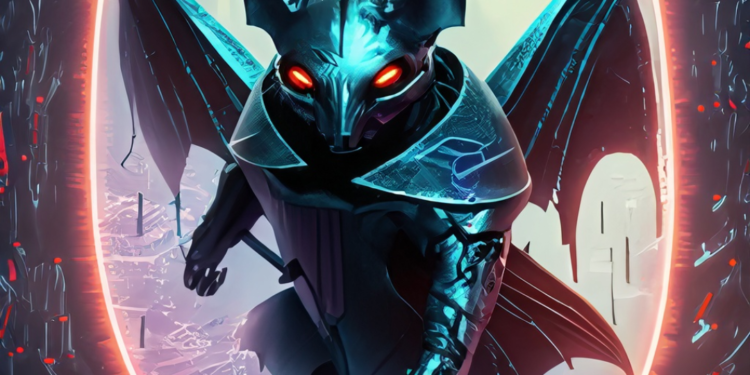In the shadows of cyberspace, there lurks a beast, cloaked in mystery and encoded with nefarious intent. Enter BatCloak, the fully undetectable (FUD) malware obfuscation engine that has been arming cybercriminals since September 2022. This potent tool grants threat actors the capability to deploy a variety of malware strains under the radar of antivirus detection. An alarming number of artifacts, nearly 80% of them, managed to escape the grasp of all known security solutions, highlighting BatCloak’s uncanny ability to evade traditional detection mechanisms.
Built into a ready-made batch file builder tool called Jlaive, BatCloak dances around the Antimalware Scan Interface (AMSI), compressing and encrypting its payload to accomplish heightened security evasion. Despite being taken down after being initially made available via GitHub and GitLab, the tool continues to be a cause for concern as it has since been cloned, modified, and ported to languages like Rust by other players in the cyber-underworld.
Unpacking BatCloak: The Anatomy of an Invisible Threat
Inside the BatCloak
At the core of BatCloak’s functionality are three loader layers – a C# loader, a PowerShell loader, and a batch loader. It’s the batch loader that initiates the decoding and unpacking process, ultimately detonating the hidden malware. Encased within this batch loader is an obfuscated PowerShell loader and an encrypted C# stub binary, which allows for complex coding that goes unnoticed. This way, BatCloak gains entry into its target system and wreaks havoc from within.
The Evolution of BatCloak
Ever since its inception, BatCloak has undergone numerous updates and adaptations. It’s always striving to be better, or in this case, worse. The latest version, known as ScrubCrypt, is a closed-source model, a move driven by the developer’s desire to monetize the project and protect it against unauthorized replication. This shift also marks an attempt to build on the achievements of prior projects such as Jlaive.
The Interoperability of BatCloak
The unsettling reality of BatCloak is that it can work alongside several well-known malware families. From Amadey to AsyncRAT, DarkCrystal RAT to Pure Miner, Quasar RAT to RedLine Stealer, Remcos RAT to SmokeLoader, VenomRAT to Warzone RAT, the list is alarmingly diverse. This adaptability underscores the dangerous flexibility of BatCloak, a malware obfuscation engine that is proving to be a force to reckon with in the cybersecurity world.
BatCloak’s Growing Presence
A Rising Threat
As BatCloak continues to grow and adapt, it is leaving an indelible mark on the threat landscape. The engine’s cunning ability to make malware fully undetectable places it as a formidable cyber threat. It’s an example of how sophisticated and complex cyber threats have become, always one step ahead of traditional defense mechanisms.
Beyond the Numbers
A staggering 80% of BatCloak’s artifacts remain undetected across all security solutions. This statistic alone showcases the level of stealth and sophistication that this engine can achieve. This level of infiltration highlights the pressing need for more advanced, proactive cybersecurity measures.
A Wake-Up Call for Cybersecurity
The advent and spread of BatCloak is a wake-up call to security researchers and organizations around the world. It demonstrates that it’s not enough to rest on existing security laurels. Instead, there is an urgent need for continual evolution, learning, and improvement in cybersecurity.
Conclusion
In the age of escalating cyber threats, BatCloak presents a stark example of the ever-evolving and increasingly sophisticated attacks that organizations face. Its success in dodging traditional security measures is a sobering reminder of the pace at which the cyber threat landscape is evolving. As it stands, the cybersecurity industry is presented with a unique challenge: To fight an enemy that cannot be seen, one that seamlessly integrates with the digital environment and masterfully cloaks its intentions.
The story of BatCloak’s rise and evolution underlines the urgent need for a comprehensive overhaul of the cybersecurity defense mechanism. Cyber defenses need to be dynamic, adaptive, and anticipatory. Only then can they effectively ward off threats like BatCloak.
As we delve into the murky waters of BatCloak and its implications, one thing remains clear. The world of cybersecurity is in an arms race, and it’s an uphill battle. But it’s a battle that needs to be fought, and fought well, for the sake of our digital future. After all, in the face of an invisible enemy, vigilance is our best weapon.


